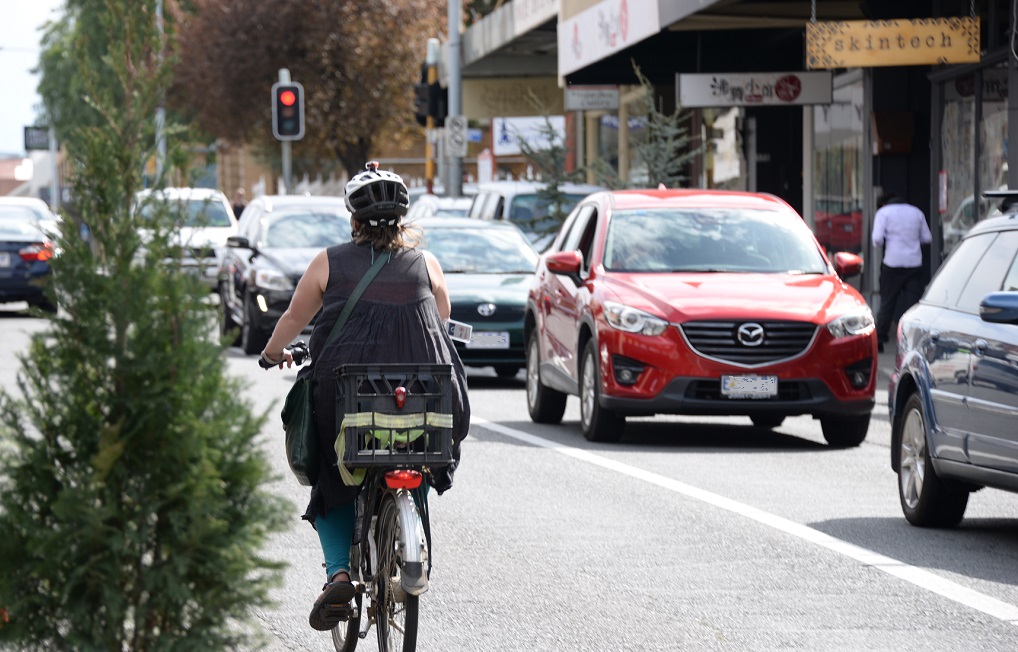One of the concerns some businesses cite when plans are floated to remove on-street parking to make way for street trees, wider footpaths or separated cycleways is that it will impact on their profits.
However, research worldwide has found that most business owners/managers overestimate the number of people who arrive at their business by car and underestimate the numbers of people who walk from distant car parks or come by public transport, walking, or riding.
One Austrian study found retailers thought about 58% of customers arrived by car but the reality was 32%, with the majority (44%) walking. Similar results have been found in research carried out in Scotland, England and New Zealand.
A proposal to remove 9 car parks in Victoria’s popular bayside suburb St Kilda to widen the footpath was opposed by the traders association until they saw the results of a customer survey, which found 57.2% of expenditure came from pedestrians, 16% from cyclists and public transport users, and only 26% from drivers.
University intern local research
We put half of this question to a local test with an intern from the University of Tasmania’s School of Business and Marketing, who devised a public survey to gauge transport attitudes in Hobart’s city centre.
The online survey ran for two months from August 2020 and was publicised online, including via Bicycle Network sites, and short articles about it appeared in The Mercury and Kingborough Chronicle newspapers.
It received 265 responses, and while as a self-selected group it is not a representative sample of the population, it does provide interesting insight into the behaviour of a sizeable number of visitors to Hobart.
More than half of the respondents said they were willing to walk up to 10 minutes from their car park to their destination, while one-third wouldn’t walk more than 5 minutes.
This also correlates to the finding that more than half of the respondents usually parked in one of the major council-owned car parks where they get the first 90 minutes of parking for free: Argyle Street Car Park, Hobart Central Car Park, and Centrepoint Car Park.
This is important information for those business owners who worry about losing car parking on the street in front of their shop. A 5–10 minute walk from a car park covers several city blocks and means many people would park in an off-street car park or several streets away from their destination. This opens up the opportunity for Hobart to remove some on-street car parking in a handful of streets to provide separated cycleways.

Safety puts people off riding
By contrast few of the other respondents said they caught a bus to get into the city or rode a bike, and of the small number who did ride a bike most said safety was their biggest concern about riding. The majority of respondents who said they did not usually access the city by bicycle said they would be open to riding if physically separated bicycle lanes were available.
Unfortunately, another intern working on the research project was unable to engage enough businesses to complete a survey of how they thought their customers were getting to their premises and how far they may have walked. This is an outstanding area of research that would be helpful to better understand the dynamics of car parking politics in our urban centres.


